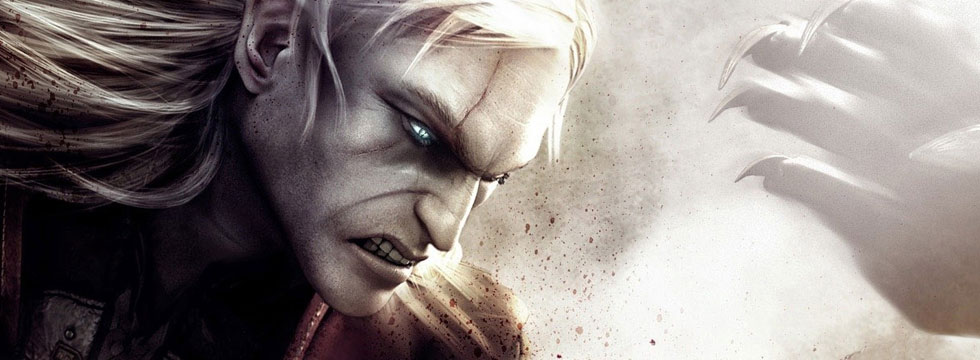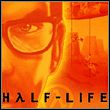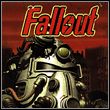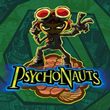author: luckie
Going in with a bang – the best debuts in the history of gaming
Some developers need years to make it to the top, some others need decades. There is, however, a certain group of developers that got blasted up there with a single game.
In most cases, going from zero to dev hero is a long and thorny road: you can begin with less than ambitious platform games (Blizzard), something extremely niche (Bethesda), or games intended as extra material to that one article you were writing at the time (id Software’s John Romero). Once in a while, however, there comes a debuting developer studio that refuses to knock at the door of digital entertainment, meekly waiting to be let in – they kick the door down, tell the waiter to leave the champagne and get lost, then proceed to declare themselves the kings of this byzantine metaphor that has dragged on for far too long now. Here’s an article about men and women who didn’t give a rat’s posterior about how things should be, and from the very first minute made it very clear to everyone, gamers and competition alike, that there’s a new sheriff in town. We’ve prepared for you a list of famous debuting games that were highly successful in terms of financial or artistic value, heavily influenced the industry in one way or another, or simply launched the careers of their creators sky-high.
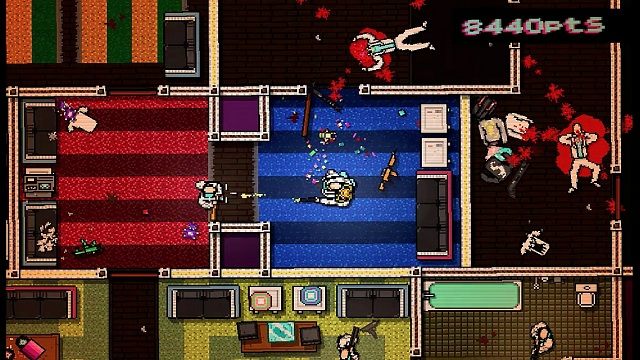
We have decided to omit indie games in this selection, as the list including them would be longer than the volume of a certain bearded man’s fantasy saga – thinking about how many indie developers can boast “instant success” in their CVs, adding games like Hotline Miami, Limbo, and a great many of others would be unavoidable. We also excluded those developers, who after their debut hit focused solely on its further development – gg Riot Games, don’t cry Mojang – as well as those, whose popularity was restricted to a single region of the world (not this time, Piranha Bytes). We put more focus on games that required significant financial investments, and consequently, posed a certain risk for their creators. In the beginning, completely obscure, now, the games have achieved a well-deserved cult status, and their creators - worldwide recognition. We wouldn’t even dare think you will agree with our list – after all, it’s hard to remember every noteworthy debut in the industry’s long history – therefore, we encourage you to send your candidates, and have a pleasant read!
1997: Monolith Productions – Blood
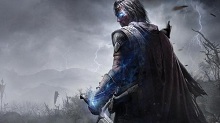
What happened next?
After the release of Blood, Monolith Productions went through a quality rollercoaster, releasing games that were more or less successful – the former include No One Lives Forever and its sequel - stealth games inspired by the spy movies from the 60s. In 2004, the studio was bought by Warner Bros. Interactive Entertainment and later, under new management, released two productions set in the Lord of the Rings universe (one of them being the well-received Middle-earth: Shadow of Mordor), The Matrix Online, as well as the brilliant F.E.A.R. and its sequel.
Blood, as well as several other games on this list, had to go through some complications before it was finally released. Initially, the game was developed by Q Studios, until 3D Realms sold the rights to Monolith Productions, a studio founded in 1994. Monolith absorbed the whole developer team of Q. At that point, the game was basically complete (the new masters have even decided to remove some of its features, like the idea of giving player the ability to change into a beast after killing a large number of enemies in a short time), and was released in May 1997. Blood followed in the footsteps of Duke Nukem 3D and Doom (even going as far as “borrowing” the Build engine from the former – it was the first time ever when voxels were used in weapon, ammo, and world designs) and added quite lot of its own to the genre’s premises – the distinctive, half-seriously, half-jokingly dark setting, a charismatic, snarky protagonist armed with more one-liners than actual weapons, and, above all, the gore, skillfully navigating the fine line between bad and intentionally awful taste (how do you like blowing up your enemies to play soccer with their heads?). Unfortunately, a great idea was not accompanied by a great success: Monolith Productions’ debut may have gotten the acclaim from critics and was selling pretty good, but not nearly enough to contend with hits like Duke Nukem 3D or Quake. Nevertheless, even today many gamers believe it to be a solid cult classic and a regular contender in rankings for the most underrated game of the 90s.
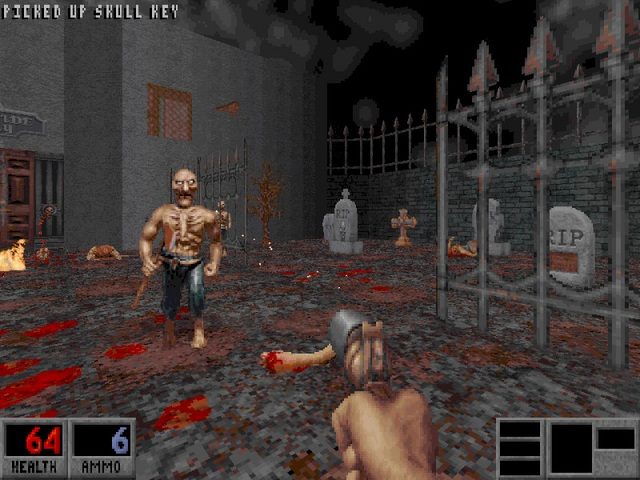
Perhaps the gore was at fault, perhaps the gamers simply preferred a more experienced developer – either way, while not as popular as its competitors, Blood was a very good FPS, especially for a developers’ debut title. The game was never expanded into a full-fledged franchise – although it has seen two add-ons and a sequel, they have remained mostly irrelevant – but it left a faithful fanbase that was willing enough to try to recreate its charms using the Quake or Doom II engines.
1997: Black Isle Studios – Fallout

What happened next?
Last few years of the 20th and the beginning of 21th century were the golden age of Black Isle; you could hardly find a more cherished developer at the time. A year after Fallout, its sequel came out, becoming a classic as well. Later, the studio, together with BioWare, developed and released the first Baldur’s Gate, then – this time on their own - created the RPG masterpiece that was Planescape Torment, and the two parts of Icewind Dale. Unfortunately, the lucky streak came to an abrupt end when in late 2003 the team was disbanded by Interplay, which has been suffering from serious financial difficulties.
Let’s begin with a short explanation: yes, it’s true that every box cover, every webpage, and every magazine you can find will tell you that the first Fallout was made by Interplay – the game’s publisher by the way. While it is true to a certain degree, as it was Interplay who set up Black Isle Studios – except they were there 2 years earlier than when you think they were. The developer team was assembled in 1996 and the first entry in the world’s most popular digital post-apocalyptic franchise was their work. If so, why would they be left unmentioned? Did they have some kind of strife with Interplay? Fell prey to some internal company shenanigans? You wish it were something so thrilling – the truth is plain to the point of being silly. The team needed those two years to find a name for themselves. Promptly, their first creation got signed by the publisher. And that’s why Black Isle cannot, yet ought to be credited with making one of the most famous evergreen classics in history of the gaming industry… they have become Black Isle (which is a name of a peninsula somewhere in Scotland I believe) only after the release of Fallout. Putting that little detail aside though… that was one heck of a debut! The developers took inspiration in the 1988 Wasteland, and vastly expanded some of its decade-old ideas. What we got as a result was a post-apocalyptic RPG with an unforgettable atmosphere, a vaultload of black humor, pop culture references, and offering an unparalleled at the time degree of freedom in exploration, as well as tough choices and consequences in questing that could almost never be labeled simply as “good” or “evil”.

Depending on your preferred attributes, the playthrough could look completely different (try lowering your character’s INT to the lowest possible value and see what happens), which only added to the merciless urge to try out every last option offered by the Fallout’s fleshed out world and the game’s unique S.P.E.C.I.A.L. system, which is considered a cult classic in itself at this point. Black Isle’s debut achieved much more than just winning the genre fans in the moment of its release – it remains a cornerstone of western RPG design, and one of the most influential games in the industry’s history.
1998: Valve – Half-Life

What happened next?
Valve used their successful debut as a springboard, quickly becoming one of the premier companies in the industry. Year 2004 has brought us Half-Life 2, a game that, while suffering a very difficult delivery, has become one of the highest-rated games in digital entertainment ever. It was during the development of HL2 when Gabe Newell came up with Steam – a digital distribution platform which could be also used to register game copies and store saved data. Recently, Valve decided to try their luck in hardware development as well, creating the Steam Machine.
When Gabe Newell and Mike Harrington founded Valve, back in 1996, they needed one thing – a reason to spend their days on computer gaming. As both of them were already millionaires after having worked for Microsoft, the money was not the issue, that’s for sure. They decided to invest their savings in the development of an ambitious FPS; one that would be scary like Doom and offer fast-paced action like Quake. Unfortunately, the initial fruits of their labor were less than impressive. As one of its designers said many years later, the initial build of the game worked fine, except it wasn’t much of a fun to play. In an act of desperation a complete makeover of the project was ordered, stalling the release for several months. In the meantime Valve have set a clear objective for themselves: they wanted to make an interactive equivalent of a very long and very spectacular action movie. However, many publishers declined it in fear that, while the idea itself is very attractive, it would be impossible to deliver on that promise, which has left Half-Life without a distributor for a long time. When it eventually hit the shelves (in 1998, thanks to Sierra Entertainment), it turned out to be not only an astounding commercial success, but also a breath of fresh air in the stale FPS clubroom of the late 90s.
The main reason for that was the game’s immersiveness: from the very first second and up to the last line of the credits, we’ve been watching the world through the eyes of Gordon Freeman; cinematic cut scenes were replaced with scripted stages. The plot was no less impressive. Where the competition (specifically id Software) preferred a minimalistic approach to the game’s storytelling, Gabe Newell and co. gave us a story that could keep the players involved with no visible effort. The world seemed to be alive; it was full of brilliantly-designed opponents, diversified array of weapons, and provided an excellent background for battling critters from other dimension. Valve’s success was further underlined by the modding community, which took a keen interest in creating original content, sometimes radically diverging from Half-Life itself – that’s how Counter-Strike was born, to name but a single example.
2000: IO Interactive – Hitman: Codename 47


What happened next?
Although the initial reviews rated Codename 47 as merely a „good” game, Hitman quickly became a real golden-egg-laying goose for IO Interactive. No wonder they remain so eager to release new games starring the bald tuxedo killer (the next one is to be expected soon). Other than that, the Dutchmen are responsible for the very successful 2003 Freedom Fighters, as well as two parts of Kane & Lynch that met with somewhat less enthusiastic reception.
Yeah, yeah, I know, and (hopefully) so do you, that the first Hitman was far from perfect, especially when it comes to technical aspects; because of this, it could be taken as debatable if it really was such a wonderful debut. Now let’s derail that train of thought and remember that it is thanks to this game that Agent 47, one of the characters indispensable to the modern gaming, was born. IO Interactive definitely could have done better with their first creation, but the game’s merits on the field of digital entertainment just won’t allow for sweeping it under the carpet. You have to remember that the development process was hindered by a lack of publisher, and the controversial theme of the game – assassinations for money – sure didn’t help its case. Until eventually, the project was taken in by Eidos.
As it turned out, Eidos made a good deal, for the debuting franchise felt surprisingly fresh even in its initial iteration. It had a rough, immoral aura surrounding the setting, a silent, always focused, stone-cold professional as a protagonist, and provided an intriguing mix of tactics, stealth, and action – good planning was far more essential to saving your skin than even the fastest reflexes, being bold and quick-witted was helpful though. What made the game unique, however, was how IO Interactive let the players have their way with planning and execution of a contract; some of the sequels have since elevated this premise to the point of art and brought us some of the best levels in the history of gaming. Today, Codename 47 is mostly seen through its wasted potential, which could only be fully realized in the sequels, but is regarded as a solid game nevertheless: beginning from the demanding difficulty level (try going through a metal detector with a concealed gun, I dare you. You’ll have every bodyguard from Hong Kong to Hockenheim pointing his gun at agent 47…), to the abovementioned freedom of execution, and the brilliant atmosphere – those are the foundations of one of the most famous franchises of digital entertainment. Although speculating about what IO Interactive could have done with it if they had a bigger budget at the time is a moot point by now, I somehow get the feeling that the first Hitman could have become a game on par with the best of its sequels.
2001: Lionhead Studios – Black & White

What happened next?
In 2005, a sequel to Black & White was released, but its reception was not as warm as you could expect. Fable on the other hand – Lionhead’s second project, initially an Xbox exclusive game – was more than welcomed. That RPG featured a unique system which, with regard to the character’s behavior and actions, modified his appearances and NPCs reactions, and became an instant cult classic in some circles, spawning a franchise which unfortunately displayed a steady decline in quality in the later installments.
Long ago, before the time of men, when the revolutionary ideas of Peter Molyneux were more likely to make you clap your hands than facepalm, the Brit decided to found Lionhead Studios (named in honor of a hamster belonging to one of his employees) in his hometown, Guildford. Bullfrog, his previous company, released a god game for its debut production; Lionhead was to do the same. Black & White, released in 2001, vastly expanded the ideas introduced in Populous, while simultaneously adding new strategic elements, introducing Creatures (a growing, animal shaped critter, which could learn new skills to help the player’s rule or fight our enemy’s subjects as well as similar creatures), and even some beat ‘em up elements. The player’s main task was to defeat the hostile deity, Nemezis, and become the most powerful being in the world. This could be achieved by convincing the world’s inhabitants, be it by benevolence or violence, to believe in you.Here’s where the most interesting aspect of Black & White comes into play. The game had something like a morality system which modified the map and user interface correspondingly to the player’s actions. If the followers were swayed to our side with miracles, we provided them with a good living, and acted quick in the time of need, the villages under our control were beautiful and peaceful, if however, we preferred to rule with an iron fist, the villages became dark, and their residents outright scared. Lionhead made it a point not to penalize either approach and allow the players to experiment with the “good vs. bad” deed ratio; every task could be completed in vastly different ways.
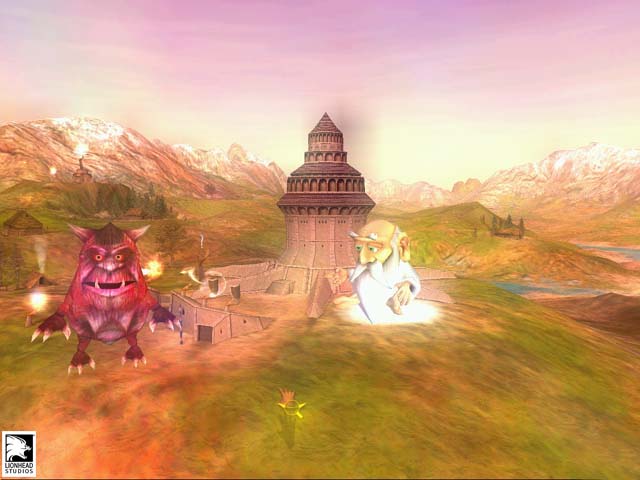
It was enough to provide Black & White with a spectacular success upon its release: average score 9/10, that’s something. The interesting thing is, many journalists revisiting the game a few years later were noticing significantly more bugs and shortcomings than they used to; which in consequence led Lionhead’s debut work to being a strong contender for the history’s most overrated game trophy.
2004: Crytek – Far Cry
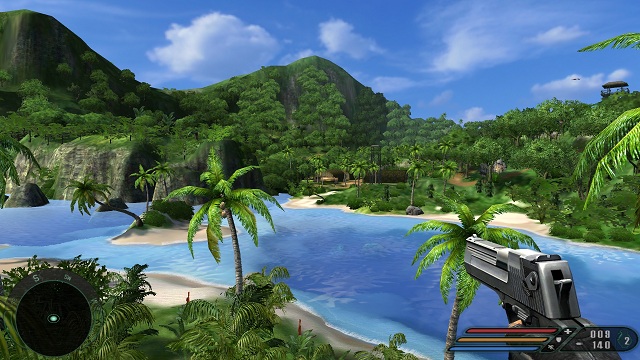

What happened next?
The IP rights to Far Cry were claimed by the publisher. Since then, Ubisoft have released three sequels – the fifth installment, dubbed Far Cry Primal, is set for release early next year. Meanwhile, Crytek took one more shot at exploring the limits of what contemporary PCs could handle, thus Crisis was born – an FPS very similar to their debut work, albeit featuring a futuristic setting and focusing around the empowering abilities of a nanosuit. The game met with a very warm reception and has since seen a big expansion as well as two full-fledged sequels.
The games an average FPS fan was eagerly expecting in 2004 were: Halo 2, Doom 3, and Half-Life 2. Surprisingly, the big splash came in March, and from an unexpected place at that – German developer Crytek, founded by three brothers of Turkish origin, outperformed all competition in terms of what was thought to be possible in action games when it comes to visuals. Well, some more observant among us could have suspected that Far Cry will be a force to be reckoned with, after having seen the GeForce 3 tech demos of what was called X-Isle on several occasions (did you know, we could have ended up shooting dinosaurs instead of mutants and mercenaries?). Upon release, however, many players were taken by surprise with how the developer team boldly managed to define a new visual standard with their debut project. All thanks to their other creation – the CryEngine - able to generate vast, diversified locations covered in a variety of thick vegetation.
Taking shots at Far Cry after all that time since its release, while possible, is rather hard. If you forget about abhorrently long loading times and the fact that the mercenaries get replaced by mutants as the main enemy at some point in the game, Far Cry remains a brilliant FPS, featuring many unconventional solutions. Most of all, it let the players loose on a beautiful, open world which could be explored by boat, car, or even a hang glider, allowing them to discover completely new ways to achieve what was demanded from them. The AI of the enemies was great as well; seeing their numbers significantly thinned out with our actions, they were beginning to falter and preferred to find a good cover than fight a losing battle. The only issue that comes to mind are the breath-taking hardware requirements that prevented many players from enjoying this exciting tropical paradise excursion – Crytek’s creation provided a good workout even for dedicated gaming rigs.
2004: Obsidian Entertainment – Knights of the Old Republic II: The Sith Lords
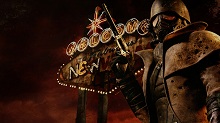
What happened next?
Since the release of Knights of the Old Republic II Obsidian Entertainment have made a name for themselves as a truly ambitious team, albeit one that tends to release their games in less than perfected state. The number of bugs and glitches to be found in Alpha Protocol or Fallout: New Vegas was nothing short of hair-raising. Lately however, as South Park: The Stick of Truth and Pillars of Eternity have shown – both games met with a very warm reception – associating them with nothing but bugs and glitches might be a bit unjust.
You can love Obsidian Entertainment for their brilliant yet heavily bugged games, or hate them for their heavily bugged yet brilliant ones, it’s your call – their debut, Knights of the Old Republic II, provided enough ammunition for both camps. Five guys who left Black Isle after having worked on games like Fallout 2 or Planescape: Torment had to swallow some bitter pills after they founded their own studio. Electronic Arts rejected any cooperation, Ubisoft gave Dark Messiah of Might & Magic to Arkane Studios; ultimately, it was Lucas Arts who decided to entrust the new-founded developer with making a sequel to the Bioware’s famous RPG set in the Star Wars universe. The first major problem they had to face was the deadline – the publisher wanted the game finished and ready in just 15 months, and when that turned out to be impossible, delegated its own workers to help in the home stretch. Still, upon release the game has left very much to be desired. The Sith Lords were brimming with animation glitches, bugs in AI and pathfinding. Furthermore, the visuals were disappointing, as if they were left to rot after the first installment. Although those were some serious issues, Obsidian did a wonderful job on the game’s other aspects. Many players regarded the sequel’s story to be even better than its predecessors’ – it forced us to make hard, morally ambiguous decisions that had impact on the development of the story itself.

Many original ideas stemming from the developer team had to be cut in order to meet the deadline, basically making KotOR II more of the same, albeit no one had a problem with that it would seem. Although Obsidian’s debut eventually turned out to be a success, the cooperation with Lucas Arts was over in a less than pleasant manner, and both companies haven’t worked together ever since.
2005: Double Fine – Psychonauts

What happened next?
After their debut, Double Fine became known for creative, humorous productions like Brütal Legend, The Cave, or Broken Age, and controversies – like when they decided to end the development of Spacebase DF-9, when the game was far from containing everything it promised, and label it as “Build 1.0” only to cut user support soon after. The studio likes to employ humanity’s brilliant discoveries like Kickstarter and Early Access and is currently busy with refurbishing the big hits from Lucas Arts – Grim Fandango and Day of the Tentacle.
Tim Schafer had a reputation of a funny guy, and a creative one, when he was leaving Lucas Arts; he was responsible for games like Full Throttle or Grim Fandango. No wonder that when he announced that he is founding his own developer studio, Double Fine, in 2001, many gamers were keen to see its debut project. Schafer’s fans had to arm themselves in patience though – Psychonauts was released 4 years later. First big surprise: he abandoned the classic point-and-click interface – something old adventure games were famous for, and where Schafer himself felt at home. However, it was not this decision that has caused so many problems during the development process. It was because the studio took up an exceptionally ambitious project without a man who would knew how to deal with a publisher and financial issues. In the end, it was the lack of experience that deprived the studio of a financial success – although the game had great reviews, it sold in meager 100 thousand copies and generated substantial losses to the game’s publisher, Majesco Entertainment. When it comes to artistic values, however, Double Fine have shown that they can introduce a breath of fresh air to the industry. Their story about Raz, a boy possessing psychic powers who is doing his best to join the eponymous group of superheroes, together with other people’s minds serving as its setting was a very fresh combination; those of us who did buy the game were typically charmed by it.
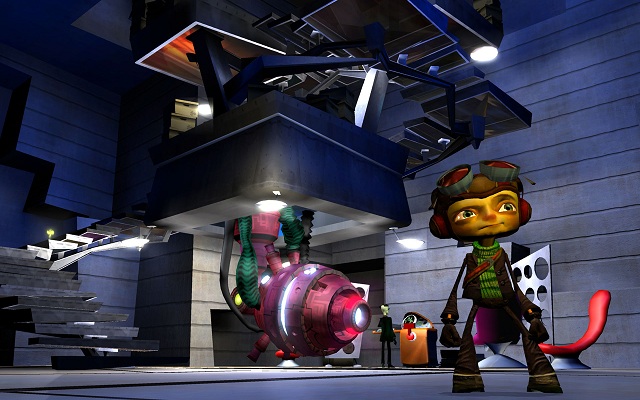
It was in no small part thanks to the big degree of artistic freedom Schafer has decided to allow his team members, which brought us some very creative level design that stretched what was possible in a platformer. The game also featured some simple puzzles, boss fights, offered many solutions to the problems we encountered, and, what is most important, that distinctive, subtle humor, which made Schafer famous in the first place. That’s one way to return to being a game developer!
2007: CD Projekt RED – The Witcher


What happened next?
In case you’ve been living under a rock, here’s what happened. The Witcher became the first installment in a trilogy that raised the quality bar higher with every subsequent part. Its sequel, Assassins of Kings, was critically acclaimed all over the world and made Wild Hunt the most anticipated game of the year (at least according to gamespot). And CD Projekt RED delivered, giving us a solid contender for the 2015 game of the year. Currently – while finishing the expansions for the third Witcher – the studio is busy with Cyberpunk 2077, a futuristic RPG, the release date of which remains unknown.
I know, I know… With all this Witcher frenzy and the upcoming GOTY awards, soon you will be afraid to open your refrigerator because a silver sword-wielding albino could be hiding in there as well (if that’s Ciri I could bear with it though…). Nothing I can do for you, I’m afraid. CD Projekt RED’s debut spawned something that other developers (especially Polish) can only dream of. There were several earlier attempts to translate the book material from a locally famous fantasy saga into a digital project – in the 90s, Adrian Chmielarz (who later worked on Bulletstorm and The Vanishing of Ethan Carter) and Metropolis Software tried making a Witcher, or Hexer as it was then called, but ultimately failed – but the one to complete the task was the internal studio of a Polish publisher CD Projekt, with its developer team founded in 2002. The game had a decent budget (estimated to be more 20 million Polish zlotys – that’s roughly 5 million dollars) and a professional promo campaign… and yet there were troubles a plenty. The initial alpha build turned out to be a complete failure and the licensed game engine needed to be modified, which resulted in several months worth of delays.
Ultimately, the game was a hit and, although it was anticipated mostly by Polish gamers, it gained some significant critical acclaim in other places as well. What stood out was the intriguing plotline, featuring morally ambiguous choices that mattered, the audiovisuals, and a user-friendly but decently complex character progression system. What was frowned upon in the game was the general lack of polish (bear with me), long loading times, and sexism (at least according to the Americans, but I agree that cards featuring naked women were not the most subtle form of gaining attention) The Witcher wasn’t exactly an astounding financial success – 2 million copies were sold, which barely covered the development costs – but CD Projekt RED wanted something else than the sales. The Polish developer used this chance to gain a foothold in the world of AAA gaming, and they definitely didn’t waste it. Makes you wonder what would have happened if the first Witcher had seen a console release after all!
2011: Eidos Montreal – Deus Ex: Human Revolution


What happened next?
With their newfound self-confidence Eidos Montreal took up another long-forgotten franchise. Unfortunately, the 2014 Thief turned out to be a complete flop: before its release, when fans boycotted the game for changing the voice actor of the protagonist, and after, for its mediocre plot and numerous technical issues. Currently the studio is working on the sequel to their debut creation. Deus Ex: Mankind Divided is expected to be released in late February next year.
Before Eidos – once a publisher of big franchises, including Tomb Raider, Hitman, and Thief – was assimilated by Square Enix in 2007, the company spawned an internal developer studio in Canada, dubbed Eidos Montreal. The team’s debut work was to be the third major installment in the Deus Ex series, which was longing for a sequel since the release of 2003 Invisible War. Before that, “Deus Ex 3” was to be given to Ion Storm, the company responsible for the previous parts; unfortunately, that plan had to be cancelled after the team was disbanded. For their debut Eidos Montreal was burdened with a Herculean task of outdoing the game’s highly-acclaimed predecessors. No wonder some fans of the franchise were less than happy with the fact that an inexperienced developer was given the job. It raised even more concerns after the game was delayed, eventually hitting the shelves during the summer break in 2011, several months after the initial release date. Upon the game’s release, however, those shouting of an incoming disaster needed to sit down and rethink the issue.
Eidos Montreal successfully resurrected a franchise, whose merits for the digital entertainment simply cannot be overstated. The third Deus Ex nailed it when it came to the dark, utopian aura from the previous installments, and created a modern rendition of a world where corporations have more power than governments, mysterious organizations influence the course of history from the shadows, and biomechanical augmentations seem to tear the humanity apart more than they can mend it. Eidos Montreal have decided to focus the game more heavily around sneaking than the previous games (the heavily criticized boss fights were made by another studio – GRIP Entertainment), amplifying the mood of omnipresent danger and intimidation. Add some wonderful visuals, employing a yellow-saturated color scheme, to the mix, a brilliant, electronic soundtrack, and lots of references to movie classics like Blade Runner or Robocop, and you will get one of best games of 2011. And remember that it had some exceptionally formidable competition back then.
